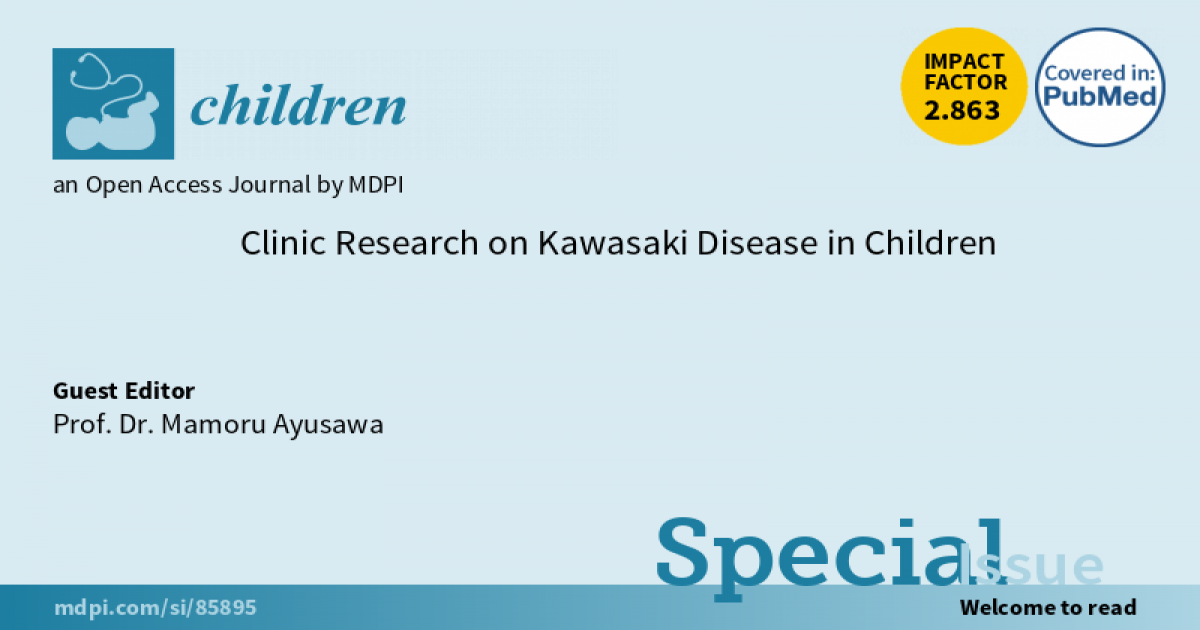Clinic Research on Kawasaki Disease in Children
A special issue of Children (ISSN 2227-9067). This special issue belongs to the section "Pediatric Allergy and Immunology".
Deadline for manuscript submissions: closed (30 April 2022) | Viewed by 11519

Special Issue Editor
Special Issue Information
Dear Colleagues,
In 1961, Dr. Tomisaku Kawasaki noticed a strange combination of characteristic manifestations in young children. He collected 50 similar cases into his ‘God Only Knows’ file. This file demonstrated a historical case series of a unique and complicated disease, which was later bore his name. After more than 60 years since the first case, we have obtained extensive knowledge about Kawasaki disease (KD). The countries where KD is diagnosed and treated are gradually increasing, particularly in Asia and Latin America, in addition to Japan, Korea, Taiwan, Australia, and the United States. Many researchers are competing to discover the distinct cause of this unique phenomenon.
However, its etiology has not been clearly elucidated. Particularly, discussions concerning its relationship with multisystem inflammatory syndrome induced by SARS-CoV2 was raised suddenly in 2020–2021. Its resemblance to KD is a hot topic and a significant key to the disclosure of the pathophysiology of KD.
We would like to collect novel discussions from all clinicians and researchers who are interested in this unique disease.
Prof. Dr. Mamoru Ayusawa
Guest Editor
Manuscript Submission Information
Manuscripts should be submitted online at www.mdpi.com by registering and logging in to this website. Once you are registered, click here to go to the submission form. Manuscripts can be submitted until the deadline. All submissions that pass pre-check are peer-reviewed. Accepted papers will be published continuously in the journal (as soon as accepted) and will be listed together on the special issue website. Research articles, review articles as well as short communications are invited. For planned papers, a title and short abstract (about 250 words) can be sent to the Editorial Office for assessment.
Submitted manuscripts should not have been published previously, nor be under consideration for publication elsewhere (except conference proceedings papers). All manuscripts are thoroughly refereed through a single-blind peer-review process. A guide for authors and other relevant information for submission of manuscripts is available on the Instructions for Authors page. Children is an international peer-reviewed open access monthly journal published by MDPI.
Please visit the Instructions for Authors page before submitting a manuscript. The Article Processing Charge (APC) for publication in this open access journal is 2400 CHF (Swiss Francs). Submitted papers should be well formatted and use good English. Authors may use MDPI's English editing service prior to publication or during author revisions.
Keywords
- Kawasaki disease (KD)
- Coronary artery aneurysm
- Immunoglobulin
- Vasculitis
- Multisystem inflammatory syndrome in children (MIS-C)
- Children or child
Benefits of Publishing in a Special Issue
- Ease of navigation: Grouping papers by topic helps scholars navigate broad scope journals more efficiently.
- Greater discoverability: Special Issues support the reach and impact of scientific research. Articles in Special Issues are more discoverable and cited more frequently.
- Expansion of research network: Special Issues facilitate connections among authors, fostering scientific collaborations.
- External promotion: Articles in Special Issues are often promoted through the journal's social media, increasing their visibility.
- Reprint: MDPI Books provides the opportunity to republish successful Special Issues in book format, both online and in print.
Further information on MDPI's Special Issue policies can be found here.






